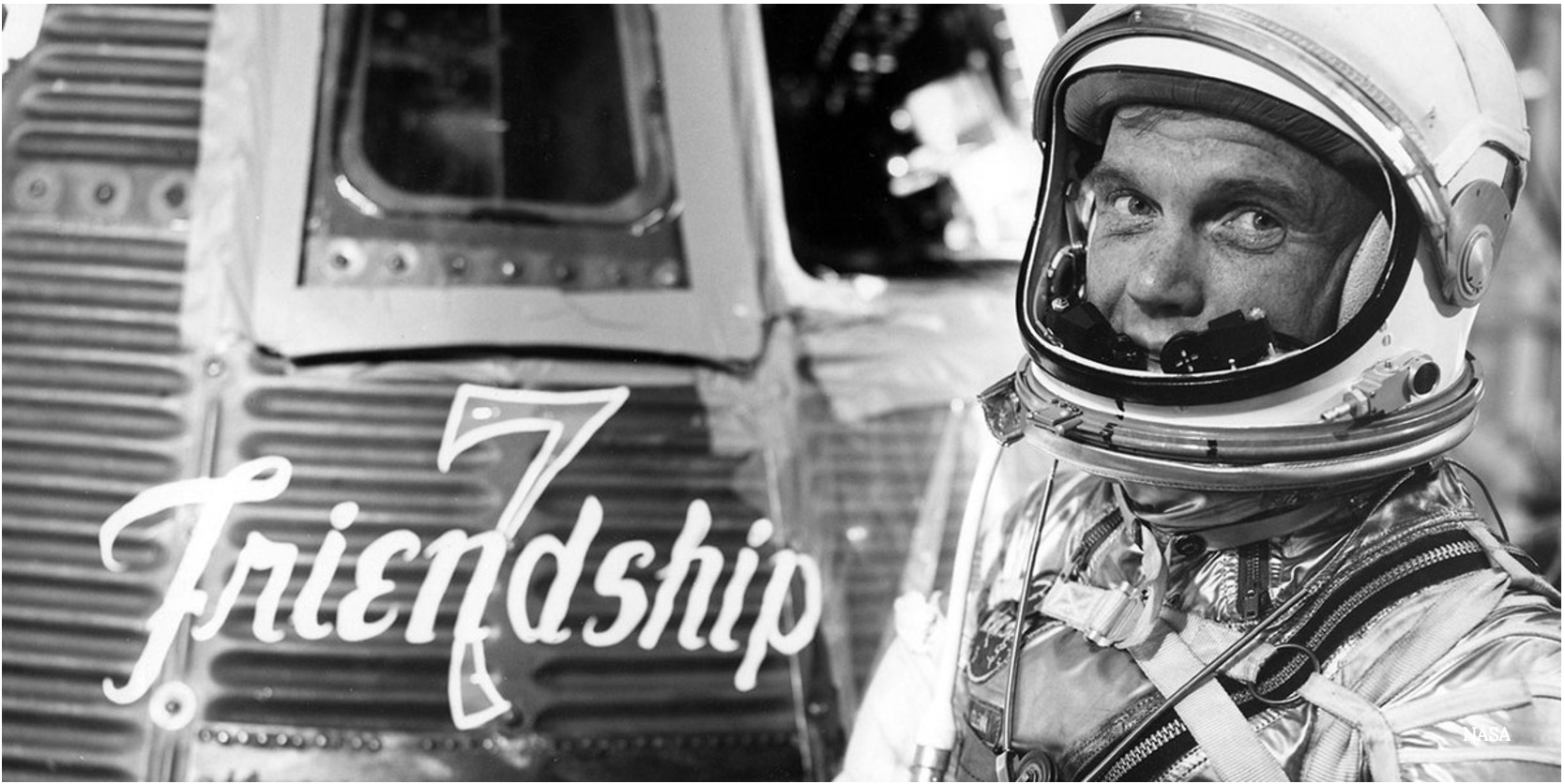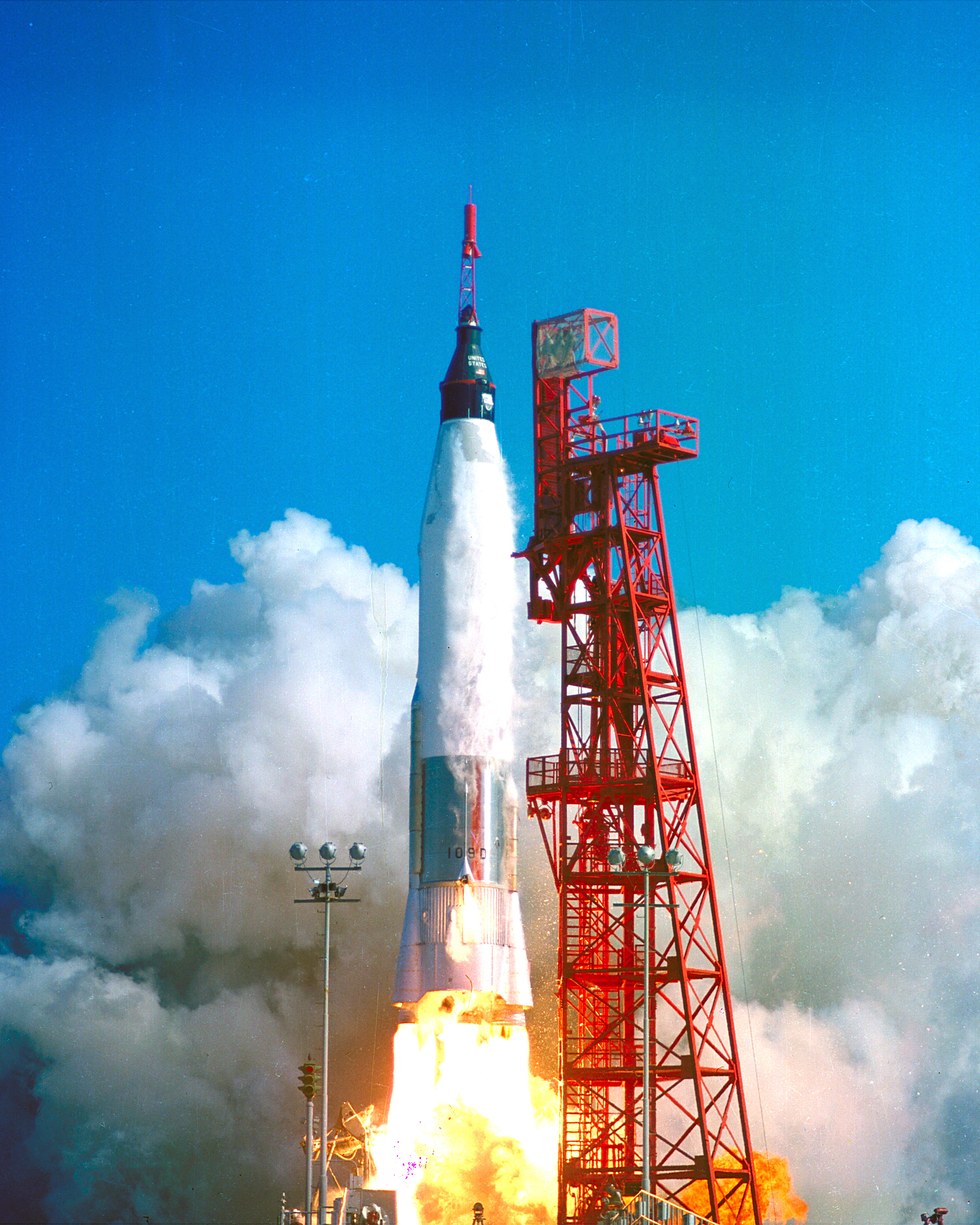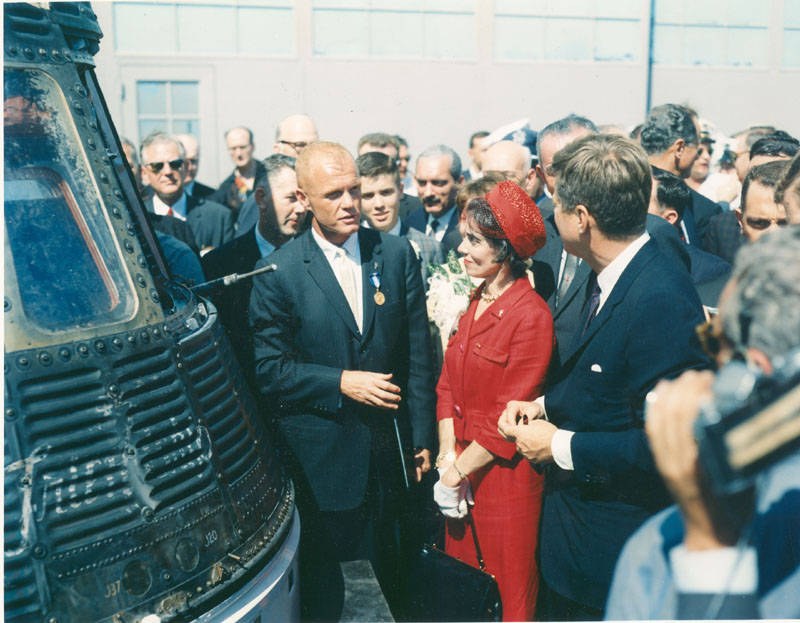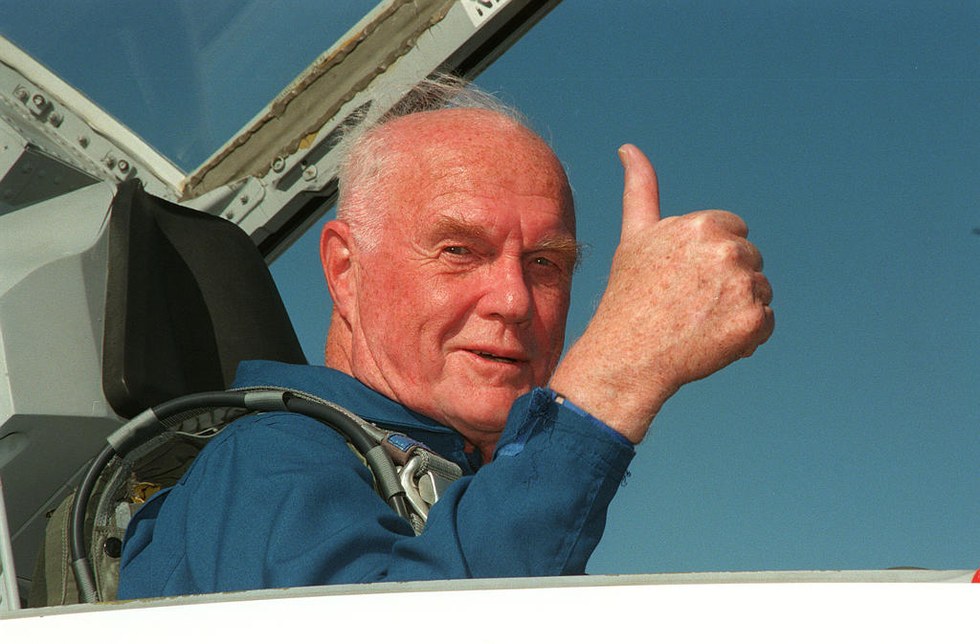John Glenn's Orbital Mission Tested the Mysteries of the Human Body in Space

Fifty-five years ago this month (Feb. 20, 1962), John Glenn became the first American to orbit the Earth. At that time, there was a space race starting up between the United States and the Soviet Union, with the Soviet Union racking up several firsts in a short time. This included the first satellite (Sputnik, 1957) and the first person to not only go into space, but orbit the Earth (Yuri Gagarin, 1961).
The United States had already sent two astronauts into space before Glenn, but Alan Shepard and Gus Grissom's 1961 launches were suborbital flights, meaning that the spacecraft flew up and then splashed down without going around the Earth.
Glenn's achievement — three orbits in space — caught attention worldwide and made him famous overnight. Here are some highlights about Glenn's flight, which was recently featured in the movie "Hidden Figures." Glenn died in late 2016 at age 95.
Marine Astronaut No. 1
John Herschel Glenn (standing at far right) was one of NASA's first seven astronauts, dubbed the Mercury 7 after the Mercury program, NASA's first human space program. The astronauts were selected in 1959 from a group of military pilots. Glenn was the only one selected from the Marines. Prior to joining NASA, Glenn served in the Second World War and the Korean War, did test flights at the prestigious U.S. Naval Test Pilot School in Maryland, and performed the first supersonic transcontinental flight.
RELATED: Fellow Astronaut Recalls Privilege of Going to Space With John Glenn
Before Glenn's flight, two others of the Mercury 7 flew in space: Al Shepard (seated, second from left) and Gus Grissom (seated, at left). Shepard and Grissom each flew suborbital flights on a Redstone rocket. For orbital flight, Glenn required another kind of rocket called the Atlas; he was the first human to use it.
Learning About the Human Body
When Glenn climbed into his tiny spacecraft ("Friendship 7"), the United States had about 30 minutes of spaceflight experience. The effects on the human body were very poorly understood at that time, so some of the main science experiments aimed to figure out what would happen if a human was in space for hours at a time. (Today, we are still trying to answer that question, but dealing with a matter of months or years.)
Breaking space news, the latest updates on rocket launches, skywatching events and more!
"Eyes were one thing that I was to check," Glenn said in a 1997 oral interview with NASA. "Whether I felt any imbalance or vertigo was another thing to be checked. They didn't know whether you could swallow properly or not. I wasn't going to be up long enough that I really had to have a meal or two meals or anything, but they wanted me to take material along to swallow, which I did. They wanted to know if there was any change of feel, fingers or anything like that, any tendency toward any sickness, whether it was induced from the inner ear or wherever."
Heat Shield Warning
Glenn flew into space on Feb. 20, 1962 after several delays relating to weather and equipment problems. Besides the science experiments, Glenn was tasked to fly the spacecraft manually as a test to see if he could maintain altitude, but as it turned out the automatic-control system failed and Glenn instead flew in manual mode because he had no choice.
RELATED: John Glenn, American Hero and NASA Astronaut, Has Died
Glenn's time in space lasted nearly five hours. Late in his flight, data from the spacecraft indicated the heat shield was loose, meaning that his spacecraft was at risk of being destroyed during re-entry due to the heat caused by the friction of the spacecraft against the atmosphere. Glenn was instructed to keep his retrorocket pack attached as a precaution. Later analysis determined the heat-shield indicator was false.
Tracking Eye Problems
One of the questions doctors wanted to learn was how the eye changes in space, whether its shape would change and affect vision. While there was no large change when Glenn was in microgravity for a few hours, in recent years NASA and other entities have identified eye problems with astronauts staying in orbit for long periods of time (months). Research into how to address the problem is still ongoing.
"At the top of the instrument panel is a little Snellen chart like the eye chart they use in doctors' offices, miniaturized for the distance from my eyes to the panel," Glenn said in a 1997 interview with NASA. "I was to read the smallest line I could read every twenty minutes all during flight and report what that was, so if my eyes were changing shape or vision was changing, I would be able to report this."
Fame and Statements on Female Astronauts
Glenn returned to worldwide fame, receiving the attention of President John F. Kennedy (right of picture) and Kennedy's wife Jackie. Kennedy gave Glenn the NASA Distinguished Service Medal, and over time Glenn became a friend of the president and his family. Glenn also received a ticker-tape parade in New York City and spoke before the House Committee on Science and Astronautics in 1962. At the time, Glenn said that he favored selecting astronauts from military pilots — a career that was just about 100 percent male.
RELATED: How John Glenn Drew the First Orbital Flight
"The men go off and fight the wars and fly the airplanes and come back and help design and build and test them. The fact that women are not in this field is a fact of our social order," Glenn said in 1962, echoing the sexism of his era, according to Smithsonian Magazine. His position softened in a few years, however, when he advocated for having women in NASA's scientist-astronaut program that selected astronauts in the late 1960s. Sally Ride — the first American woman to fly in space — flew two decades after Glenn, in 1983.
Return to Space
After the flight, Glenn was reportedly grounded from further space excursions because he was deemed too valuable an astronaut to lose.He resigned from NASA shortly after his flight, and subsequently ran for the U.S. Senate. After a few failed attempts, he was elected for the state of Ohio in 1974 and was a member for a quarter-century, until 1999.
But it turns out his time in space wasn't over yet. In 1998, Glenn flew on the space shuttle Discovery for an eight-day mission at age 77, making him the oldest person to fly in space. Among the experiments he participated in were several related to aging, and how an older human body adapts to space. Glenn remained an active public speaker for years, even making an appearance at the Apollo 11 30th anniversary celebration in Washington, D.C. in 2009 (at age 88). He died in December 2016 at age 95, the last surviving member of the Mercury 7.
Originally published on Seeker.

Elizabeth Howell (she/her), Ph.D., was a staff writer in the spaceflight channel between 2022 and 2024 specializing in Canadian space news. She was contributing writer for Space.com for 10 years from 2012 to 2024. Elizabeth's reporting includes multiple exclusives with the White House, leading world coverage about a lost-and-found space tomato on the International Space Station, witnessing five human spaceflight launches on two continents, flying parabolic, working inside a spacesuit, and participating in a simulated Mars mission. Her latest book, "Why Am I Taller?" (ECW Press, 2022) is co-written with astronaut Dave Williams.






